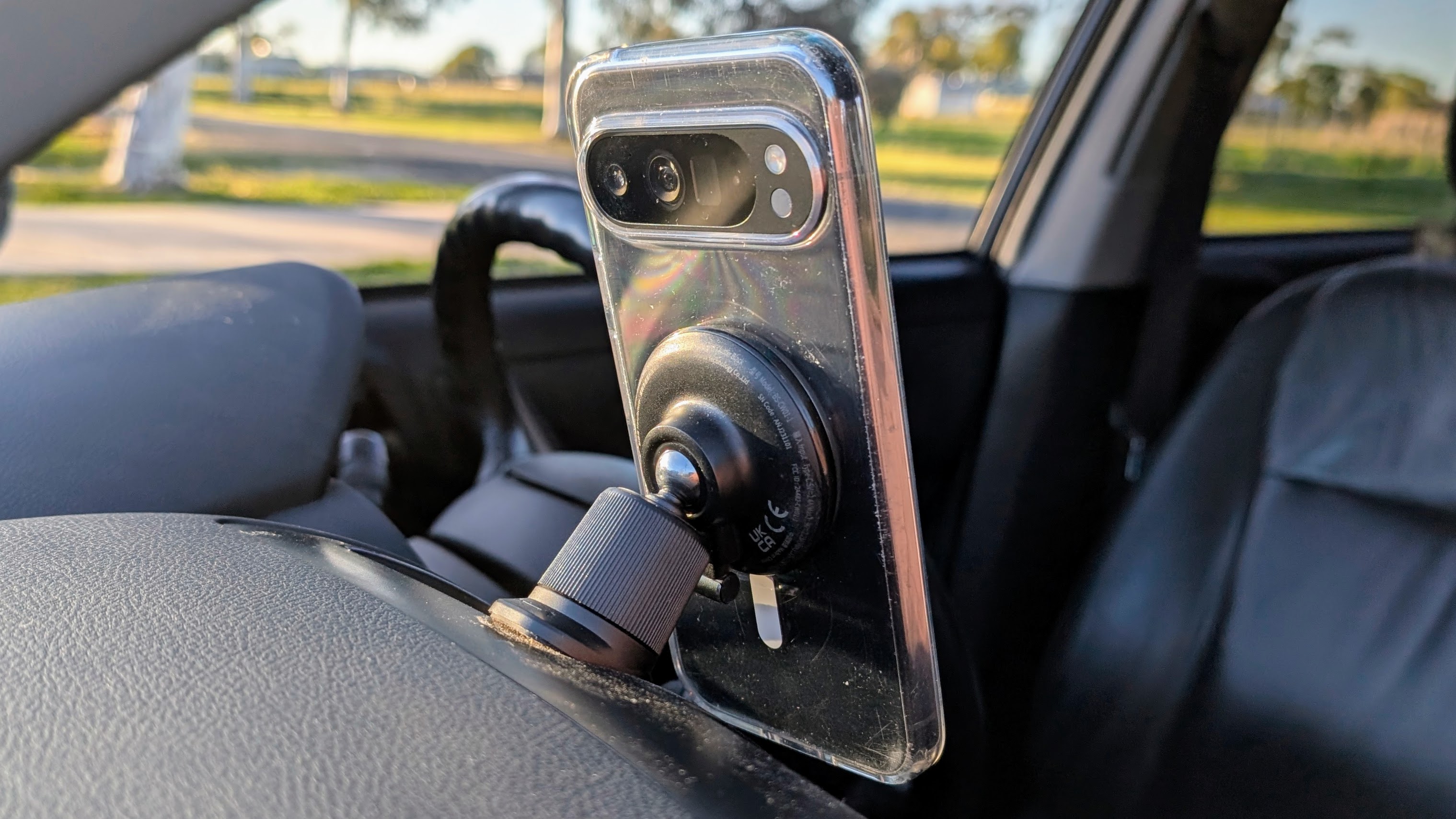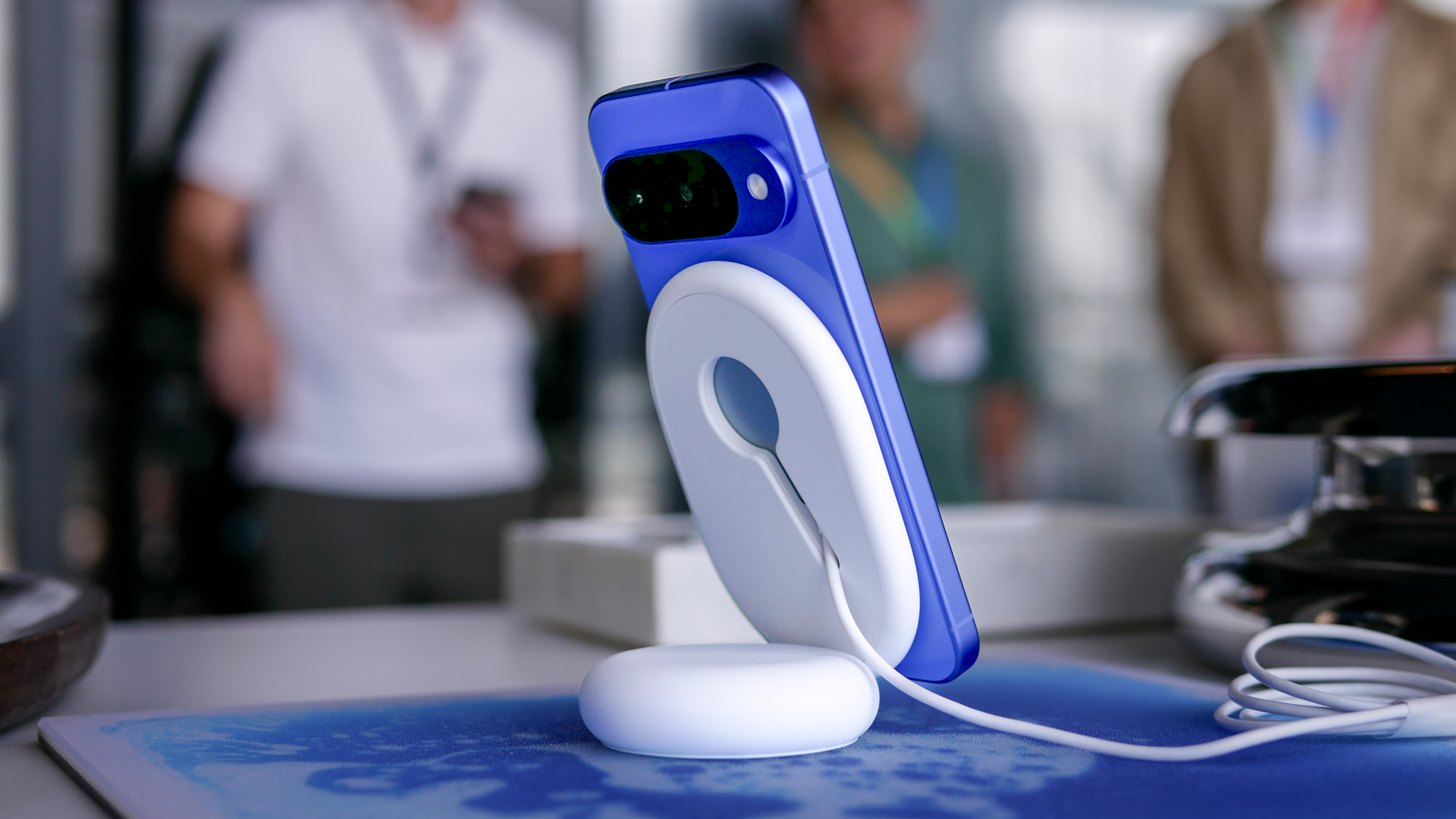I spent a year wrestling with MagSafe cases on my Google Pixel 9, from misaligned rings to hot, flaky charging. That’s why Pixelsnap (native magnets plus Qi2) is the only Pixel 10 feature I care about.
While my colleagues wax lyrical about camera and AI upgrades, I’m just here reliving a year with the Pixel 9. I’ve always envied Apple’s MagSafe wizardry, but adding compatibility with third-party cases is an exercise in frustration.
Sure, the overly rigid dust- and smudge-prone case I ordered from Google alongside my Pixel 9 last year works just fine. But of the eight others from less exacting brands, seven misaligned the magnetic ring and charging failed or limped along while getting uncomfortably hot.
My magnetic car mount barely held, my favorite accessories went flying and even Google’s own non-magnetic bedside charger was fussy about case thickness and alignment.

I found workarounds for most issues, but my white whale was tougher: MagSafe wireless charging in my car that could keep up with navigation and music streaming.
After months of trial, error and too many Amazon returns, I finally found a combination that worked. It’s good, but not great, and needs to hog an air vent in summer to avoid overheating.
So as far as I’m concerned, Pixelsnap is the headline Google act this year and everything else is just nice to have.
Finally, there's better charging and the freedom to do without a magnetic case! Or, for people like me (who tussle with gravity a lot), the relief of knowing that even if using a case, proper alignment is now baked into the design.
Pixelsnap 101

Not sure what I'm on about? You can read more about all the new features in our Pixel 10 review or check out our deeper dive on the new tech, but I've included the key Pixelsnap points below.
- Pixelsnap is on the Pixel 10, Pixel 10 Pro, Pixel 10 Pro XL and Pixel 10 Pro Fold.
- Uses built-in magnets, plus Qi2 for MagSafe-compatible wireless charging and accessories.
- Automatic alignment, faster charging, stronger hold.
- Charge speeds: 15W or up to 25W on the Pixel 10 Pro XL.
- Backward compatibility with most MagSafe chargers and accessories.
So what’s the bad news?
Pixelsnap is a big step up, but it’s not perfect. While not a feature I used too often, Google has removed wireless power sharing to make the new magnetic setup work.
Pixelsnap wireless charging speeds aren't consistent either – it maxes out at 25W on the Pixel 10 Pro XL, but the rest of the lineup is limited to a slower 15W.
MagSafe cross-compatibility is a huge win, but the magnetic accessory landscape is still messy, and older non-Qi2 chargers won’t hit full speed, so you’ll likely need to upgrade.
Not to mention, Qi2 is still hard to find. Case in point: I collect power banks like Pokémon for our best portable chargers guide and comparatively few models currently support 15W or 25W charging on the Pixel 10.
Now, while Pixelsnap is what I care about most, for everyone else, it might not be the standout reason to upgrade to the Pixel 10. But it does remove one of my biggest annoyances with the Pixel lineup, and for that I'm grateful.
Have a MagSafe-compatible or Qi2 setup that just works? Drop the model in the comments and I’ll add it to my test list.
You might also like...
via Hosting & Support
Comments
Post a Comment